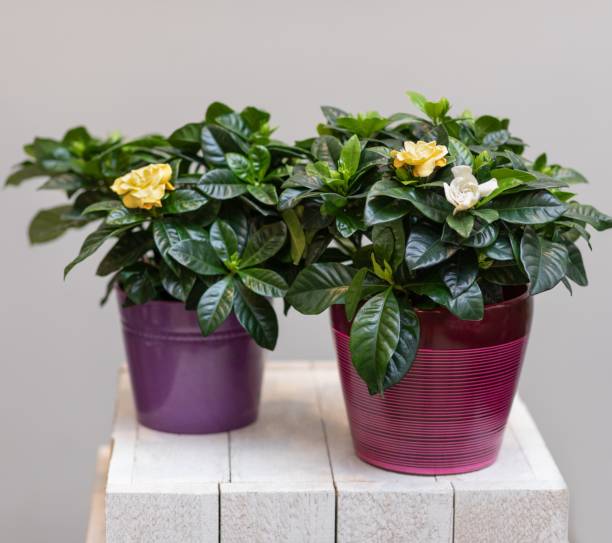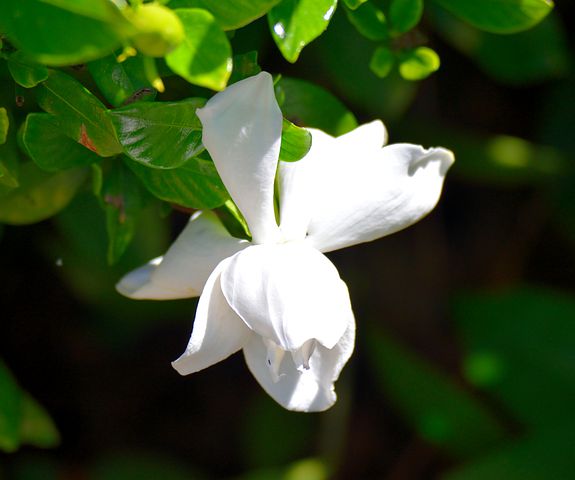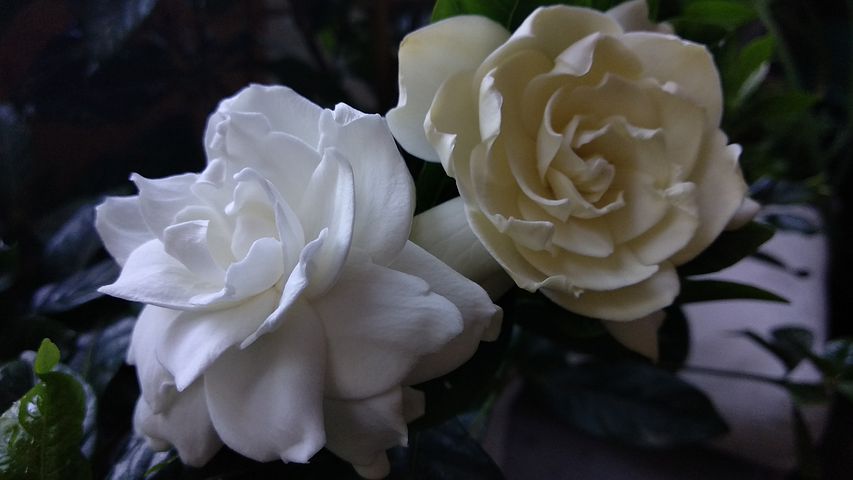How to Grow Gardenias In Pots: The Ultimate Guide on How to Take Good Care Of Them!
Growing gardenias in pots is a good idea if you want to grow gardenias indoors. The best thing about this method is that you can enjoy the benefits of gardenias in your home. While they require quite a bit of attention, these beauties are worth the trouble. Their full, rounded shape with creamy white blooms make them a perfect flower for adding to your indoor and outdoor garden. And because they are so showy, you can create beautiful arrangements that showcase their beauty. In this article, we share with you a step-by-step guide on how to grow gardenias in pots and discover their care requirements.
Table of Contents
Step-by-Step Guide on How To Grow Gardenias in Pots

Step 1: Decide What Type of Gardenia You Would Like to Grow
There are many different types of gardenias, including the evergreen gardenia, which is a shrub that typically grows to 6 feet tall and wide, and the deciduous gardenia, which is a tree that typically grows to 25 feet tall and wide.
Step 2: Gather The Necessary Supplies
Gather the necessary supplies such as pot, soil, water, fertilizer, and plants. You will also need garden gloves because gardening is messy.
Step 3: Select The Right Type of Pot For Your Gardenia
There are several types of pots available on the market, including clay pots, plastic pots, and glass pots. Make sure to choose a pot that is large enough to accommodate the root system of the gardenia and also has drainage holes so that excess water can be easily drained. The size of pots depend also on what type of gardenia you want to grow. To ensure that the plant has enough soil to maintain itself, the pot should be at least 4 inches broader than the root ball.
Step 4: Fill The Pot With Fresh, Clean Soil
Choose a light, well-drained, and organically rich potting soil. It can also be done using gritty mix soil. It’s best to stay away from clay-rich, water-retaining soil. The soil must be acidic, with a pH of 4.8–6 being optimum. Fill a pot halfway with organic topsoil, then add one or two handfuls of coffee grinds. As a result, the soil becomes more acidic. Finish filling the pot with dirt almost to the top. To assist the soil to maintain its pH level, crush a few dead leaves and mix them in with the soil. A mix of peat moss, rough sand, and potting compost is preferred by some gardeners. Choose ericaceous compost, which is specifically designed for acid-loving plants.
Step 5: Plant Your Gardenia In The Center of The Pot
Hand-dig a hole in the well-drained soil. Place the plant in the center of the container with the root ball deep enough to be covered.
Step 6: Water Your Plant
Keep them moist but not wet. When the top inch of soil on the gardenia feels dry, water it. The water should soak into the soil and flow out of the drainage holes in the container. If the plant is inside, empty the drainage saucer so it doesn’t sit in water. For indoor containers and plants outside, water once a week during the growing season. However, it may be necessary to water more often during times of hot and dry weather. During the winter, reduce watering to every other week.
If you are planting indoors, in pots on shelves or planters, set these to self-water using soaker hoses over an area of your home where the plant is growing. Ideal watering amounts for indoor plants depend upon their size but typically not less than one inch per week and never on the root ball. Soaker hoses should be placed in one area and can be moved around as needed to where they are most convenient for watering (e.g., near a sink or standpipe, at the front of your building).
Step 7: Give Your Plant Enough Nutrients
The plant needs a healthy mix of nitrogen, phosphorus, potassium, and calcium, as well as ample sunlight. For indoor gardenia a balance of 15-15-15 fertilizer is great. Also, fertilize with 1/2 teaspoon iron sulfate in 1 quart of water and Epsom salt once a month during the growing period. During its flowering season, gardenias want to be fed every 2-4 weeks (March to October).
Step 8: Place Your Gardenia in the Right Location
Select an area that is warm, sunny, and bright. When choosing a location for your gardenia bush, keep in mind that it requires enough air circulation. You should avoid placing it in a spot where water may occasionally pour over its foliage, as water droplets can cause fungal development on the leaves.
Step 9: Give Your Gardenia the Humidity It Needs
Gardenia prefers a humidity level above 60 percent. Indoor plants may require the use of a humidifier or frequent misting to maintain an optimum humidity in locations with cold, dry winter air. Avoid misting the foliage as it will cause fungal infection. By putting stones or pebbles under the plant container, you may aid to create a humid environment. Every morning, spray the stones with water; the water will gently evaporate over the day, creating humidity for your plant. Get a shallow tray that is broader than the pot as an alternative. Fill the tray with stones or gravel and water. The water should not contact the plant container or reach the top of the stones. Placing the Gardenia pot on the stones is a good idea. The pot’s bottom must not come into contact with water. Maintain a constant supply of water since the moisture will evaporate, delivering some humidity to the plant above.
Step 10: Prune Your Gardenia As Needed
During the blooming season, regular ‘air pruning’ is necessary to keep your plant looking spectacular. You should cut back on growth and remove old dead flower buds by performing in warm summer air pruning in early March. A milder temperature (70 degrees Fahrenheit) will produce weaker stems suitable for an even greater number of flowers during spring when temperatures are warmer yet winters still cool enough to induce bud drop at winter break dormancy.
Temperature

Keeping Your Gardenia Outdoor
In hotter climates, the plant will need to be shaded from the sun’s direct rays or indirect sunlight. Make sure the plant is watered and the humidity is controlled. Gardenias are temperature sensitive, requiring a constant temperature of 65 degrees Fahrenheit ( 18.3° Celsius) during the day and 60 degrees Fahrenheit ( 15.5° Celsius) at night. They may drop buds that have already grown if the temperature is over 70 degrees ( 21.1° Celsius) during the day and 65 degrees ( 18.3° Celsius) at night.
Keeping Your Gardenia Indoor
The location of your pot will be determined by the temperature in your home. Place your Gardenia on a bright window sill if your residence is kept at a temperature over 60 degrees Fahrenheit (15.5 ° Celsius). Gardenias can endure partial shade or darkness if the home temperature is below 60 degrees Fahrenheit (15.5 degrees Celsius). They can tolerate temperatures as low as 35 degrees Fahrenheit (1.6 degrees Celsius) in the shade, but not below 20 degrees Fahrenheit (-6.6 degrees C).
Repotting
Repot your gardenia plant every 2-3 years in late winter or early spring. While repotting, you don’t need to prune the roots as they are fine and shallow, and pruning them can cause root damage.
Frequently Asked Questions:
Do Gardenias Do Well in Pots?
There is no definitive answer as to whether gardenias do well in pots, as this will depend on a number of factors including the size and type of pot, the climate where your gardenia is being grown, and the variety of gardenia you are growing. However, many gardeners believe that gardenias do well in pots if they are given plenty of light and water, and if the soil is kept moist.
How Long Does It Take To Grow Gardenias in Pots?
Gardenia has a slow growth rate. There is no set time frame for how long it takes to grow gardenias in pots, as each pot will vary depending on the size, shape, and soil quality of the plant. However, typically gardenias will take anywhere from 6 to 12 months to reach maturity. During this time, you will need to water your plants regularly and fertilize them with a balanced fertilizer every two weeks.

How Do I Know When My Gardenia Has Grown Enough To Be Transplanted?
When it comes to gardenias, the size of the plant and the number of blooms are two indicators that it is time to transplant.
The size of the plant can be determined by measuring the height and width of the plant at its base. The number of blooms can be counted or estimated based on how many flowers are open at any given time.
If either indicator indicates that it is time to transplant, then the plant should be moved to a new location where it will have more sunlight and better soil conditions.
How Do I Get My Potted Gardenia To Bloom?
There are a few things that you can do to get your potted gardenia to bloom. First, make sure that the soil is well-drained and has plenty of organic matter. You should also water the plant regularly and fertilize it once a month with a balanced fertilizer.
You can also try pruning the plant back every two or three months to encourage new growth. Finally, keep the plant away from direct sunlight and cold temperatures in order to prevent it from blooming too early or too late in the season.
